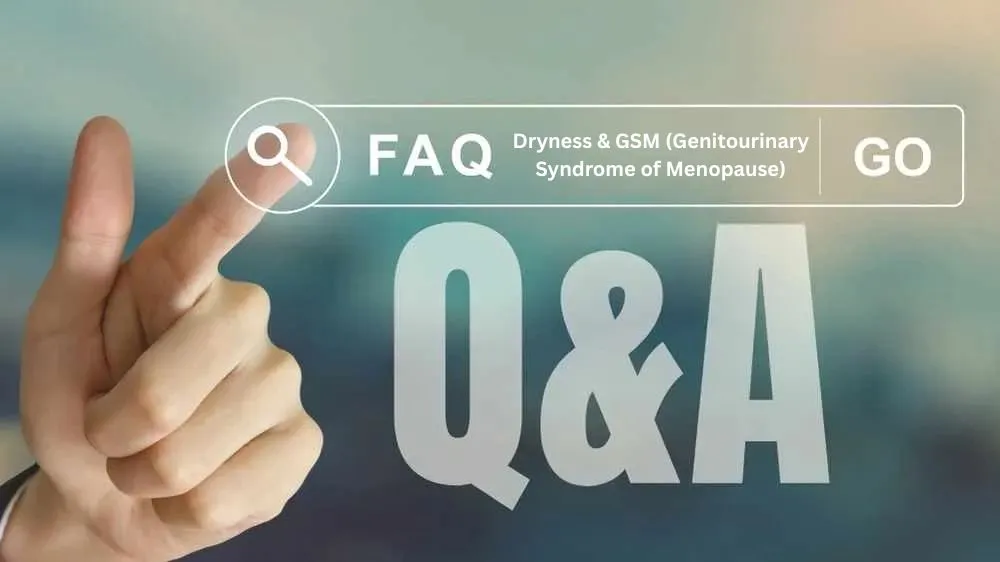In what order should I try moisturisers, local oestrogen, devices, or injectables?
In what order should I try moisturisers, local oestrogen, devices, or injectables? Start with non-hormonal basics (vaginal moisturiser and the right lubricant), then consider local vaginal oestrogen or DHEA if symptoms affect daily life. Only if discomfort persists should you discuss energy devices (laser/radiofrequency) or regenerative injectables (PRP/polynucleotides). Review progress at clear checkpoints and use the minimum effective plan. Educational only. Results vary. Not a cure.
Detailed Medical Explanation
In what order should I try moisturisers, local oestrogen, devices, or injectables? A sensible pathway for genitourinary syndrome of menopause (GSM)—also called vaginal atrophy—moves from the least invasive, most evidence-supported basics to selective add-ons. GSM combines a biology problem (low oestrogen thins epithelium, raises pH, reduces Lactobacillus) with a mechanics problem (friction, micro-tears, dyspareunia). Your plan should support both.
Step 1: Non-hormonal foundations. Build a daily routine with a scheduled vaginal moisturiser 2–4 times weekly (many prefer hyaluronic acid gels) for baseline hydration, plus a generous, compatible personal lubricant for higher-friction moments. Broadly: water-based is versatile and condom-friendly, silicone-based gives the longest glide for a tender vestibule, and oil-based feels rich but can degrade latex condoms/toys. Keep external care gentle (lukewarm water; bland emollient as a soap substitute), choose breathable underwear, and avoid fragranced washes/liners.
Step 2: Local hormonal therapy when needed. If dryness, burning or urinary urgency/frequency still affect quality of life, consider local vaginal oestrogen (cream, pessary/tablet, or ring) or vaginal DHEA. These target the low-oestrogen biology directly, improving moisture, pH and epithelial maturity over weeks. Placement matters: if pain is entrance-focused, fingertip-apply to the vestibule/posterior fourchette as well as internally.
Step 3: Address co-drivers early. Many people have protective pelvic floor over-activity after painful sex. Add pelvic health physiotherapy and, if appropriate, graded dilator work to reduce guarding. Screen for and treat mimics (BV, thrush, UTI, lichen sclerosus, contact dermatitis). If deep pelvic pain dominates, consider endometriosis/adenomyosis pathways rather than escalating surface treatments.
Step 4: Consider devices or injectables if symptoms persist. When foundations and local therapy are optimised yet discomfort remains, a small proportion explore energy devices (vaginal laser or radiofrequency) or regenerative injectables (platelet-rich plasma, polynucleotides). These options aim to improve tissue mechanics (slip, resilience) but do not replace biology repair from local hormones. Plans typically involve short series (e.g., 2–3 sessions) spaced 4–8 weeks apart with review at 6–12 weeks.
How to make choices in real life. Match the option to the problem you feel. If your main issue is vestibular “paper-cut” splits, prioritise precise placement of local therapy and consider silicone-based lubricant; if still intrusive, discuss targeted energy/injectable options focused at the entrance. If arousal lubrication is low but baseline comfort is okay, stay with moisturiser + lubricant. If cycling or tight sports kit triggers flares, change saddles/kit first. Set review points; aim to step down to the lowest effective maintenance once comfortable.
For a plain-English overview of the journey and visit flow, see how treatment steps are sequenced; for budgeting and inclusions, see treatment prices. These pages show where moisturisers, local oestrogen/DHEA, radiofrequency/laser, and injectables sit in a stepped pathway.
Clinical Context
Who may do well with foundations alone? People with mainly day-to-day dryness and occasional sting who respond to a structured moisturiser routine and a compatible lubricant (silicone-based often gives longest glide for vestibular tenderness). Many find this is enough when combined with gentle external care and avoiding fragranced products.
Who likely benefits from local therapy? Those with persistent dryness, dyspareunia or urinary urgency/frequency despite good basics. Local oestrogen or DHEA often provides the largest step-change because it directly addresses low-oestrogen tissue biology.
Who might consider devices/injectables? A smaller group who remain limited by friction-related micro-tears or entrance burn after optimising foundations and local therapy, or who cannot/choose not to use hormones. Even then, decisions are individual, with clear consent, goals and follow-up.
When to pause and reassess. Red flags—fever, malodorous green/grey discharge, severe pelvic pain, visible blood in urine, or new post-menopausal bleeding—need prompt review. If deep pain persists despite surface comfort, investigate other drivers before escalating procedures.
Evidence-Based Approaches
First-line care and self-help: The NHS explains symptoms, self-care and when to seek help for vaginal dryness. These pages align with a foundations-first approach (moisturiser + suitable lubricant) and signpost red flags.
Guideline recommendations: The NICE Menopause Guideline (NG23) advises offering vaginal moisturisers and lubricants and considering low-dose local vaginal oestrogen when GSM affects quality of life. This underpins the step from non-hormonal care to local therapy.
Prescribing & product detail: UK product information and cautions for local treatments (vaginal oestrogens, prasterone/DHEA) are listed in the British National Formulary (BNF), supporting safe selection and placement (including vestibule-targeted use when appropriate).
Comparators with robust evidence: Systematic reviews in the Cochrane Library show that local vaginal oestrogens improve dryness, soreness, dyspareunia and vaginal pH versus placebo across creams, tablets/pessaries and rings—providing the benchmark for symptom relief and maintenance.
Pathophysiology & adjuncts: Peer-reviewed overviews indexed on PubMed summarise GSM biology (thinner epithelium, raised pH, reduced lactobacilli) and place energy devices (laser/radiofrequency) and injectables (PRP/polynucleotides) as evolving adjuncts with heterogeneous evidence; hence, they are considered only after guideline-led steps.
